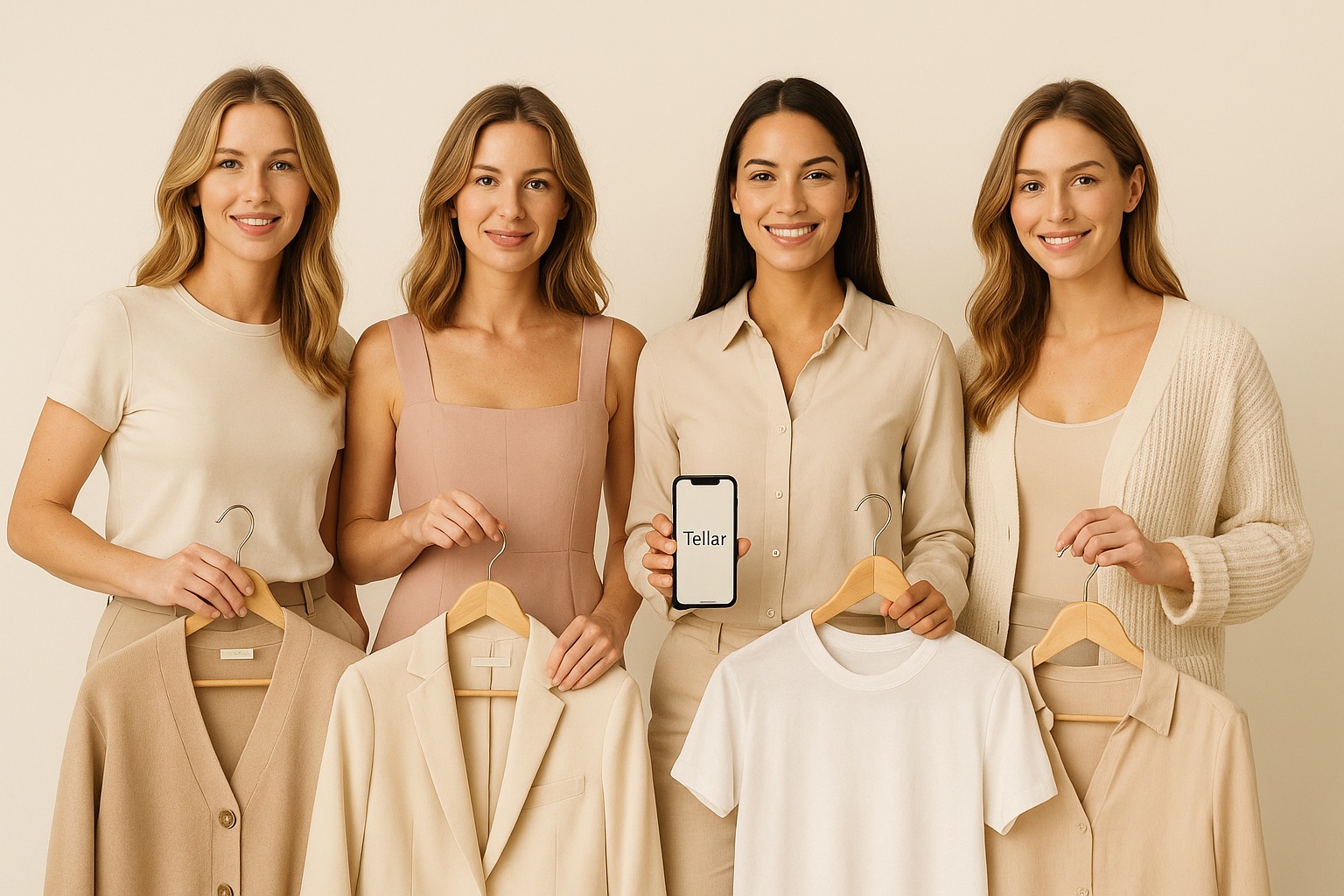High Street vs Designer Clothing Sizes Explained (UK & USA)
Author: Stylist at TellarDate: 2025
When it comes to buying clothes, understanding sizing between high street and designer brands is one of the biggest frustrations for consumers. A size 10 in Zara can feel tighter than a size 8 in Theory. A US 6 in Ralph Lauren may swamp you, while a UK 10 in Reiss might barely zip up.
This post breaks down why these discrepancies happen—factually, technically, and globally.
1. High Street vs Designer: What Do These Categories Mean?
High street brands are mass-market retailers. They offer trend-led, accessible fashion at scale, often designed to flatter a broad range of body shapes quickly and affordably. Examples:
UK: Zara, H&M, New Look, ASOS, River Island
USA: GAP, Target, Old Navy, Express, Madewell
Designer brands are premium or luxury labels. They prioritise fit, structure, and fabrication over scalability, often designing for narrower demographic or ‘model’ body types. Examples:
UK/Europe: Stella McCartney, Victoria Beckham, Joseph
USA: The Row, Carolina Herrera, Ralph Lauren Purple Label
2. Key Sizing Differences
A. Fit Philosophy
High Street: Prioritises comfort and accessibility. Sizing is often vanity adjusted to match customer expectations (more on this later).
Designer: Prioritises tailoring and structure. Cuts are closer to the body with higher waistlines, narrower hips, and longer inseams.
B. Pattern Grading
Pattern grading is how one size is scaled up or down to make a size range.
High Street: Uses commercial grading rules with generous tolerances for ease of wear.
Designer: Uses bespoke or couture-grade systems with tighter tolerances and precision cuts.
This means the same size number (e.g. UK 10) can feel like two completely different garments.
3. Specific Sizing Challenges for Shoppers
A. Vanity Sizing (More Prevalent in High Street)
Vanity sizing refers to the practice of labelling garments with a smaller number to make the consumer feel better about their size.
A high street UK 10 might have a 30" waist.
A designer UK 10 may have a 27.5" waist.
Vanity sizing is rarely used in true designer lines, which often run small or true to a pre-set block. Designer items may not have changed sizing standards for decades.
B. Inconsistent Size Charts
Each brand has its own fit model and tolerances. Even within the same brand, sizing can vary dramatically between garments. Examples:
Reiss: More structured and narrow than M&S even at the same label size.
COS: Minimal and oversized, intentionally boxy, but still labelled as standard sizes.
4. Common Conversions: High Street vs Designer (UK & USA)
UK Size | Typical Bust (inches) – High Street | Bust – Designer | USA Size Equivalent |
|---|---|---|---|
6 | 32.5 | 31 | 2 |
8 | 34 | 32.5 | 4 |
10 | 35.5 | 34 | 6 |
12 | 37 | 35.5 | 8 |
14 | 39 | 37 | 10 |
16 | 41 | 39 | 12 |
These are averages only—your experience will vary by brand, style, and cut.
5. High Street Brands That Run Small or Large
Brands That Run Small:
Zara (narrow hips, high rise)
Mango (tight bust)
& Other Stories (especially tops)
Bershka (junior fit)
Brands That Run Large:
M&S (generous fit)
H&M (especially in knitwear and basics)
Boden (broader waist fit)
ASOS own brand (especially Curve and Tall lines)
6. Designer Brands That Run Small or True

Run Small (Go Up a Size):
Isabel Marant
The Kooples
Sandro
Reformation
Victoria Beckham
Run True to Size (Slim Fit):
Theory
Vince
Max Mara
The Row
Joseph
7. Why Does This Matter?
Sizing confusion increases return rates, reduces customer confidence, and deters consumers from experimenting with new brands. When a shopper receives a designer item that feels two sizes too small, they often blame their body—not the garment.
Enter Tellar.co.uk, the UK’s most advanced sizing tool.
8. How Tellar.co.uk Solves It
Tellar.co.uk eliminates all sizing guesswork by matching your body to 1,500+ brands’ fit data in real-time.
✅ Measure once with bust, waist, and hips
✅ Or choose a known brand and size you already wear
✅ Get exact size recommendations across high street and designer labels
✅ No more reading charts, decoding vanity sizing, or ordering 3 sizes “just in case”
Try it now:
➡️ tellar.co.uk
9. Tellar Fashion Hub: Free Library for Fashion Fit & Style
Beyond the tool, Tellar offers an ever-growing free knowledge base with posts from independent stylists and fit experts.
Explore more here:
And if you’re petite or struggling with jeans sizing:
10. Follow Tellar for More Tips
Instagram: @Tellarsizing
Pinterest: TellarSizing
Facebook: Tellar Sizing
Twitter/X: @TellarSizing
Final Word
Sizing in fashion has no universal standard—especially when comparing high street and designer brands. But it doesn’t have to be frustrating.
Use Tellar.co.uk to shop smart, minimise returns, and find your perfect fit across labels—whether you’re buying COS or Carolina Herrera.
Find your size in 1,500+ brands real-time. It’s free & easy.
The Tellar Fashion Hub is the World's Largest, 100% Free, Fully searchable, Fashion Library. Filled with 4000+ Honest & Unbiased posts, written by our expert stylists.
No adverts, no sponsored posts, no subscriptions. We are 100% free to use.
We are paid by affiliates, but we never allow brands to influence our recommendations.
Honest, Unbiased, Accurate & Free.
